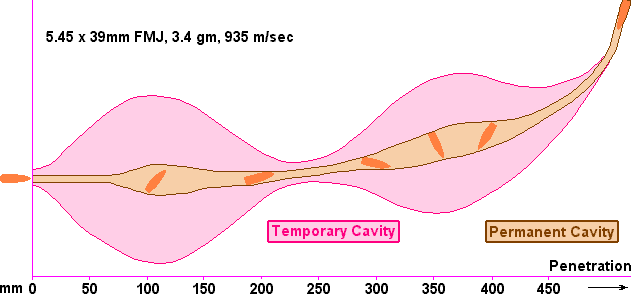7.62 x 39mm
|
|
|
|
|---|
|
7.62 x 39mm |
Re-Loading data and dimensions for 5.45 x 39mm calibre |
|---|
| Disclaimer... This page is a collecting point for fragmentary information that comes to light during my wanderings through my old notes. As a result it may be incomplete or even contain some incorrect information. It would be unwise to rely on this page of information until this warning notice is removed. |
|---|
The Soviet Russian 5.45 x 39mm calibre was developed to form a companion to the 7.62 x 39mm calibre that was used in the AK47. The 5.45 x 39mm calibre is used in the AK74.
| Date... | Originator... |
| Bullet Dia... | Main Usage... |
| Die Set... | Intended barrel length... |
| Primer... | Max overall length... |
| Trim Case... | Max Case length... |
| Crimp... | Bullet Seating... |
| Shell holders... | RCBS... | Lyman... | Pacific/Hornady... | Bonanza... |

Case Dimensions ("W" = Water capacity)
| Bullet Type | Bullet Wt. Grains | Gas Check | Powder Type | Powder Weight Grains | Powder MAX Grains | Pressure C.U.P. | Pressure lb/Sq in | Muzzle Velocity ft/sec | Muzzle Energy ft lbs | TKO |
|---|---|---|---|---|---|---|---|---|---|---|
| Jacketed | 111 | 0000 | IMR 2222 | 33.3 Gr | 33.4 Gr | 44,444 | 55,555 | 6666 | 7777 | 88 |
|
The information given and photographs in this lighter coloured panel are mainly due to J.A. Freeman and are reproduced here with his permission.
|
The Soviet 5.45 x 39mm produces the wound channel profile shown below, has been re-drawn from information on Martin L. Fackler's website.

The full metal jacket Soviet 5.45 x 39mm has a copper plated steel jacket swaged over a steel core surrounded by lead, but there is an air space of about 5 mm inside the jacket tip. Fackler speculates that this air space would cause a shift of the bullet's centre of mass toward the rear, possibly contributing to its very early yaw. In addition, on bullet impact with tissue, the lead just behind the air space shifts forward into this space. This shift of lead occurs asymmetrically and may be one reason for the peculiar curvature of this bullet's path in the last half of its path through tissue. This bullet yaws after only about 70 mm of tissue penetration, assuring an increased temporary cavity stretch disruption in a higher percentage of extremity hits, other bullets need more tissue depth to yaw and in many cases cause only minimal disruption on similar extremity hits.
All pointed bullets, that do not deform, end their tissue path travelling base first, due to their centre of mass being forward of the centre of gravity this is their stable attitude. The rotation imparted to the bullet by the rifled gun barrel is sufficient to stabilise the bullet to travel point-forward in air (in properly designed weapons), but not in tissue where such factors as bullet shape and the location of centre of mass far outweigh rotation effects. The bi-lobed yaw pattern shown is typical of most shots. Occasionally the bullet yaws 180°, to the base forward position in one cycle.
Notes
Written... 20 February 2007,
|